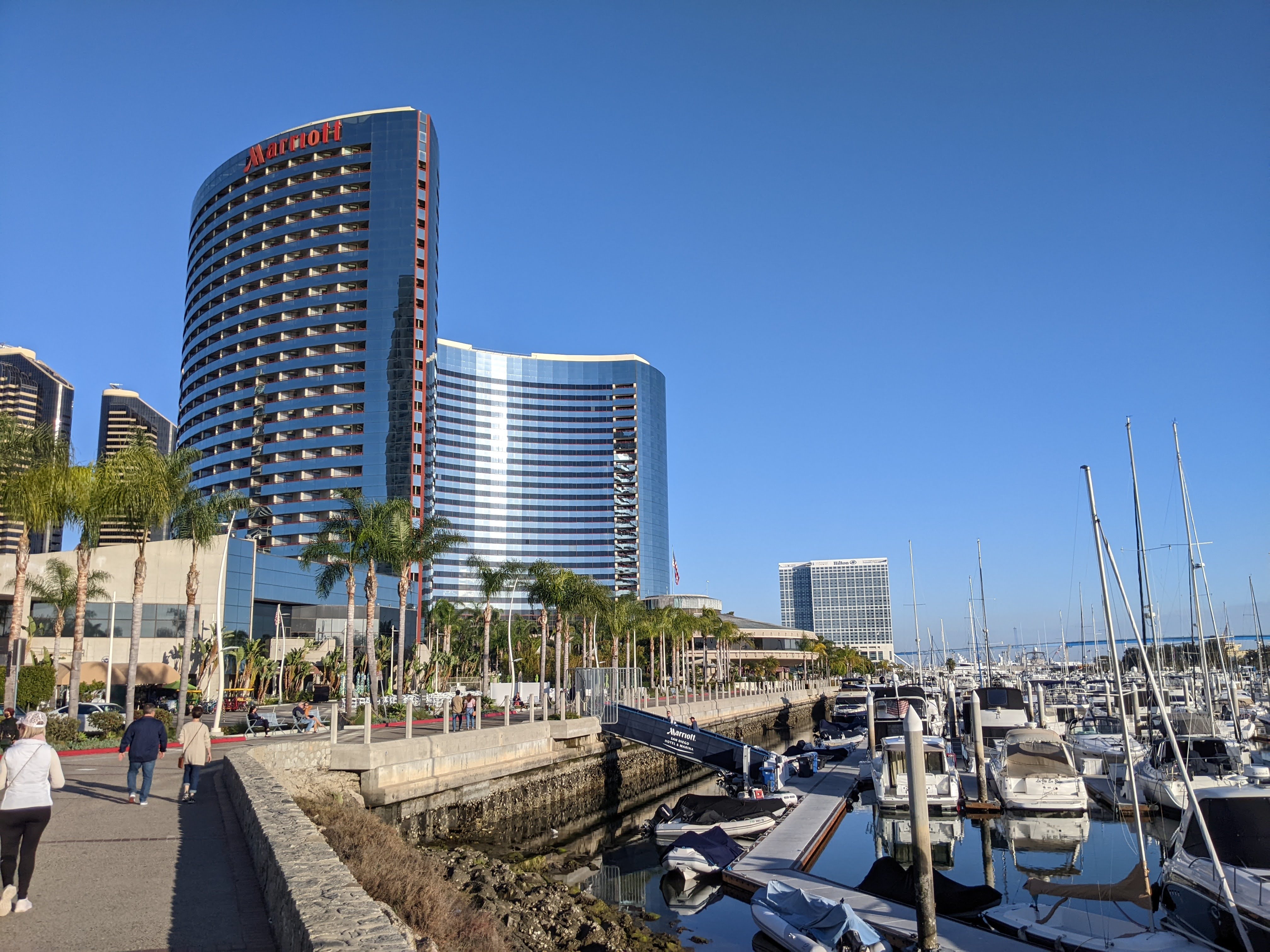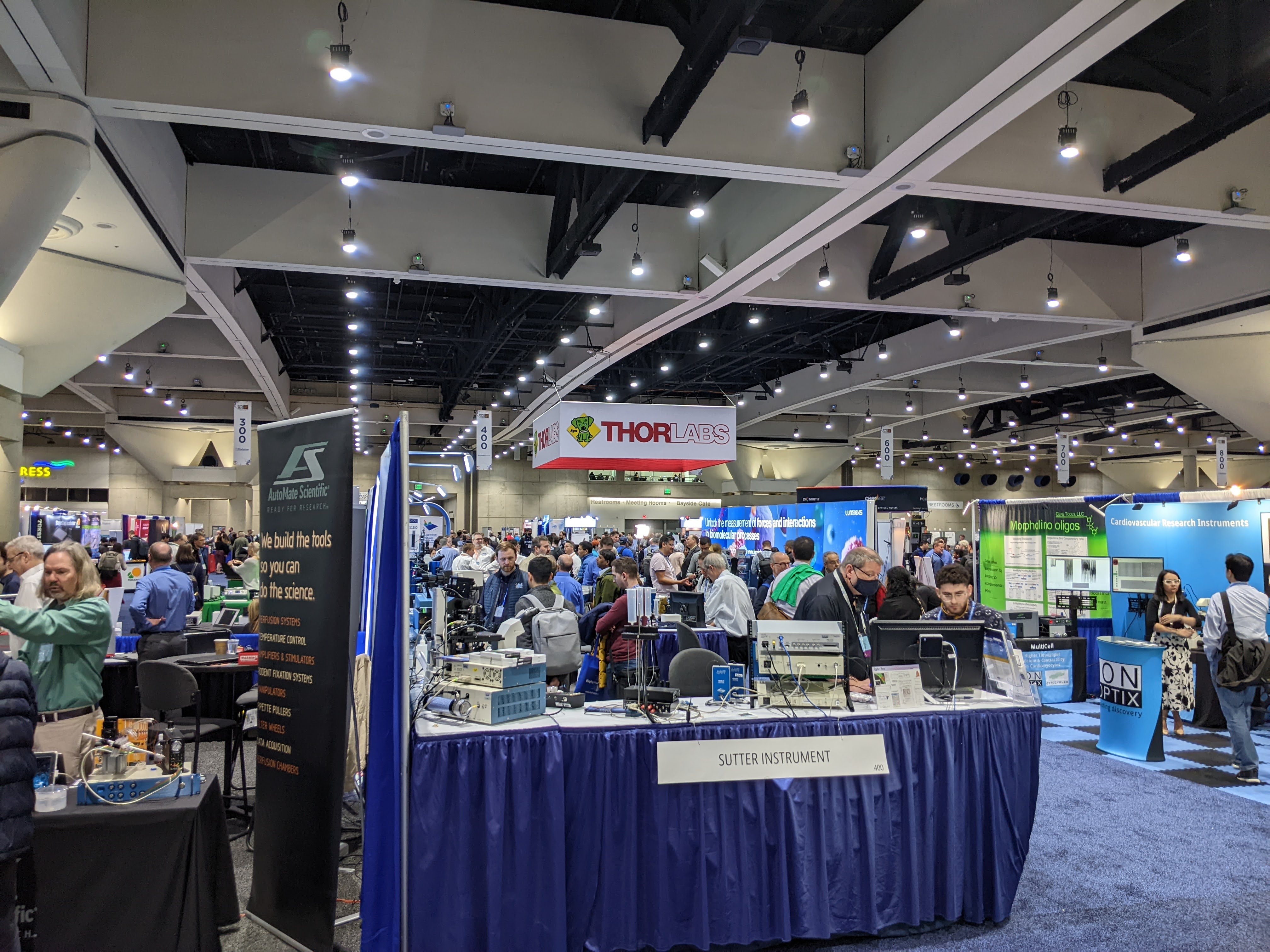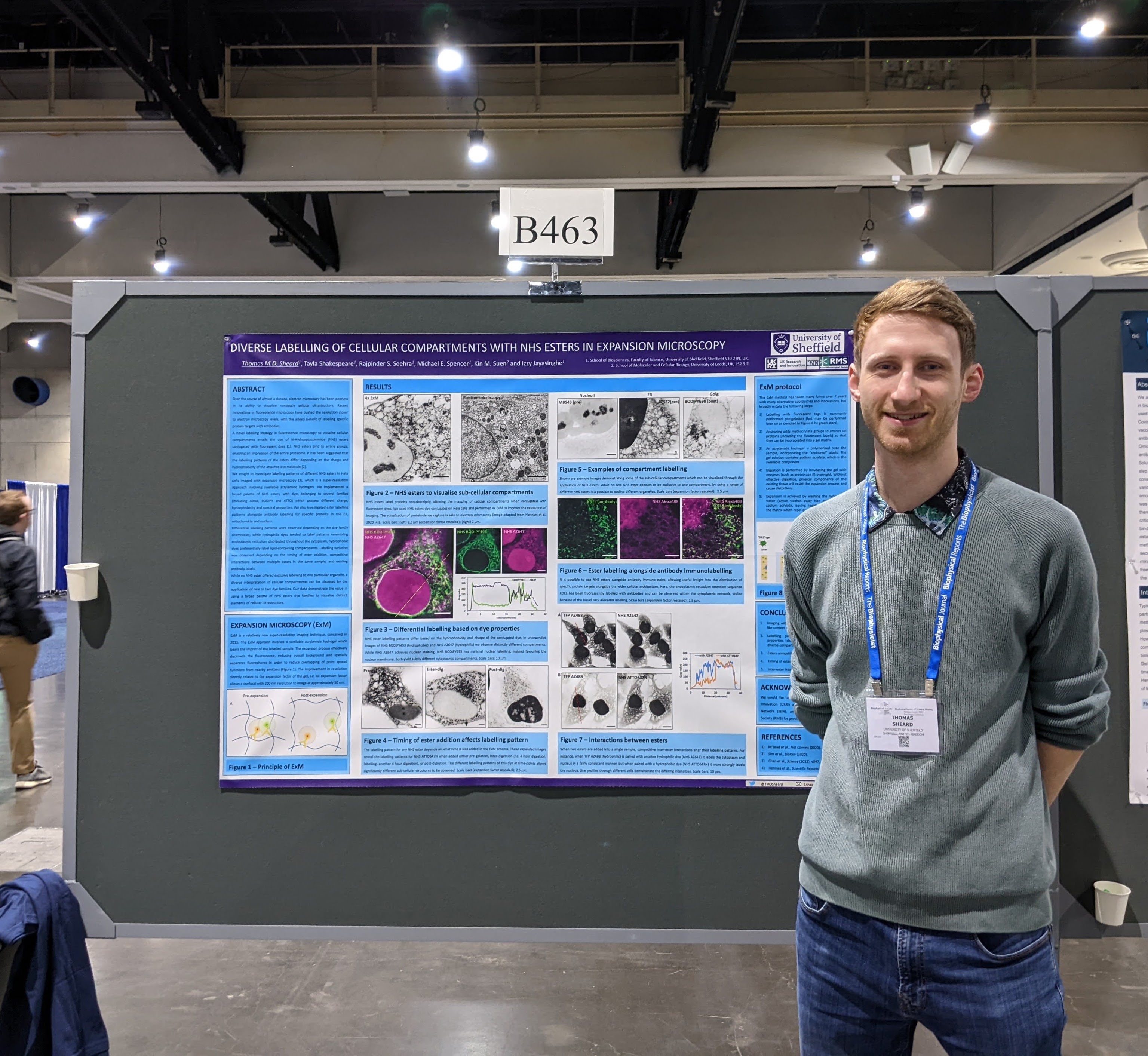
2023 Biophysical Society Annual Meeting San Diego
Friday 10 March 2023
The 67th Biophysical Society Annual Meeting (affectionately named Biophysics for short), was held this year in San Diego. This absolute monster conference, typically comprising 8 parallel sessions at any given time, running 8am-6pm for a grand total of 5 days (Saturday through Wednesday), is the kind where you wish you could duplicate yourself so as to not miss out on all the great science on offer. I am glad to have received some very wise advice beforehand - “marathon not a sprint”, ensuring a sustainable Biophysics experience.
Networking began on the plane, a considerable fraction of which appeared to be filled by Biophysics attendees – clear from the number of PowerPoints visible from the aisle, with conference-goers making last minute changes to their talks. With over 5,000 scientists rumored to be attending, one can only imagine how many tacos were consumed by Biophysical fanatics over the course of the 5 days in the “Birthplace of California”.

On my first day I started acclimatizing to the Californian sun at San Diego Zoo, in awe of the incredible polar bears. My accommodation near Little Italy, roughly a mile away from the venue, gave me a grand total of 12 blocks of sidewalk on which to gather myself (and fill myself with tasty eats), ready for the onslaught of science. The venue itself, San Diego convention centre, akin to a plane hangar in size, gave me flashbacks to Top Gun Maverick which I watched on the plane over. The convention centre sits directly next to the bay, meaning the brief respites between talks could be spent with a coastal breeze and a pleasant view of shipyard and the Coronado bridge.
This was my first international conference as a postdoc (I last attended SMLMS 2018 in pretty Delft as a 3rd year PhD student). My goals for the conference were to take in talks from a variety of research areas which could inspire my own fellowship goals, and to also network with some of the 150 companies in the exhibit hall to get a better sense of life outside of academia.

It would be impossible to summarise the sheer mass of talks across the entire conference given the wealth of sessions, but I attended stimulating sessions relating to super-resolution microscopy approaches (including innovations in dSTORM and PAINT and MINFLUX), smooth and cardiac muscle, and voltage gated ion channels. On Saturday there were a range of subgroups specializing in focused areas, I took my place in the group focused on “Nanoscale Approaches to Biology”. On Monday evening we were treated to the plenary 2023 Biophysical Society Lecture, delivered by 2021 Nobel Prize Laureate Ardem Patapoutian, on molecules that sense touch.
As an expansion microscopy user of 7 years, I was delighted to see so many researchers presenting work featuring the hydrogel-based super-resolution imaging technique, considerably more than I’ve observed at previous conferences. Interacting with these other expansion users was definitely one of the most satisfying aspects of the conference.
Poster sessions generated a palpable buzz in the exhibit hall. I thoroughly enjoyed the opportunity to present my poster on the Monday afternoon. In my poster, titled “Diverse labelling of cellular compartments with NHS esters in expansion microscopy”, I presented new insights into the use of amine-reactive ester forms of fluorescent dyes as nondescript stains to visualise overall cellular or tissue architecture. We have characterised a palette of dye esters with a range of physical properties (particularly hydrophobicities) which yields labelling of different cellular compartments in the broadly used human cell model HeLa. We demonstrated their utility as counterstains that can be combined with traditional fluorescent probes such as antibodies for both diffraction-limited, and ExM imaging. Crucially, our observations highlight a number of key considerations with regards to multiplexed labelling with fluorescent dye esters, providing a roadmap for adopting and validating the structures that they stain. The work is now available as a pre-print publication which you can read for yourself at https://www.biorxiv.org/content/10.1101/2023.02.21.529394v1 .

Aside from the scientific talks, career workshops (delivered by the charismatic figures of Andrew Green and Alaina Levine) were a highlight, focusing on a range of topics including leveraging Linkedin, the postdoc experience, and identifying career options beyond academia.
Networking feels like the main draw to a whopping conference like Biophysics. I enjoyed reconnecting with old colleagues as well as meeting so many new faces. On Tuesday evening I made it to the dinner meetup, where Alaina Levine (representing Networking for Nerds) lead a horde of attendees over to Hard Rock hotel’s own restaurant, much to the surprise of the waiting staff.
My final Biophysics impressions – with such a mindboggling quantity of science across a broad range of disciplines, I leave feeling inspired with a lot of food for thought - not just in the form of tacos - applicable to my research interests and careers goals. The Biophysics community feels so vibrant, I really hope this isn’t my last!
The final conference night I took a ferry over to Coronado island for a beach sunset and following the conference finale I road tripped up towards the desert in Palm Springs, being lucky enough to experience a rare California snowstorm en route to Los Angeles.
I would like to deeply thank the Royal Microscopical Society (RMS) for providing funding which has enabled me to attend, and I’d also like to thank the research funders - UK Research and Innovation (UKRI) and Integrated Biological Imaging Network (IBIN).